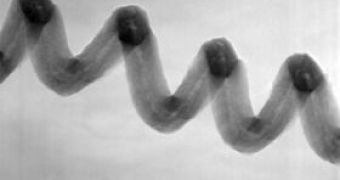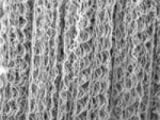Everybody loves pasta, especially the spiral kind. But on the nanoscale, they just don't taste the same. Carbon nanotubes and nanofibers that look like nanoscale spiral pasta have completely different electronic properties than their non-spiraling edible cousins.
A team of engineers at UC San Diego, and Clemson University, led by Prab Bandaru, is trying to apply these differences to new types of nanoscale electronic components, with practical applications like electrical switches, logic elements, frequency mixers and nanoscale inductors. "We are looking at spiraling, bent and helical carbon nanotubes from the point of view of new functionality. Can we get something totally different from these nonlinear nanotubes?" Prab asked himself.
Spiral nanotubes are far superior to silicon components in terms of power consumption, radiation hardness, and heat dissipation. "Because nanotubes are so small, you need to work at the atomic level to understand and manipulate them," explained Bandaru.
In fact, the spiral shape is determined by the location, more precisely by the absence or presence of single carbon atoms at strategic locations within nanotubes. "Now that we know the exact conditions under which the helical nanostructures grow, we can exert greater control over the electronic and other properties of nonlinear nanotubes," said Bandaru.
There are still some issues to be clarified, concerning the basic properties of the spiral nanotubes and the methods of controlling their growth and integration into electronic components.
A previous work by the same team has proved that Y-shaped nanotubes can behave as electronic switches similar to conventional transistors, the backbone of microprocessors and digital memory in today's integrated circuits.
"It's gratifying to encounter connections at the nanoscale between biological structures and helices and coils synthesized via chemical vapor deposition," Bandaru said. "Our future work might improve our understanding of why helices abound in nature."
The group is exploring new types of electronic nanocomponents for the computing industry, where the silicon seems to have reached the maximum limit of miniaturization.

 14 DAY TRIAL //
14 DAY TRIAL // 
